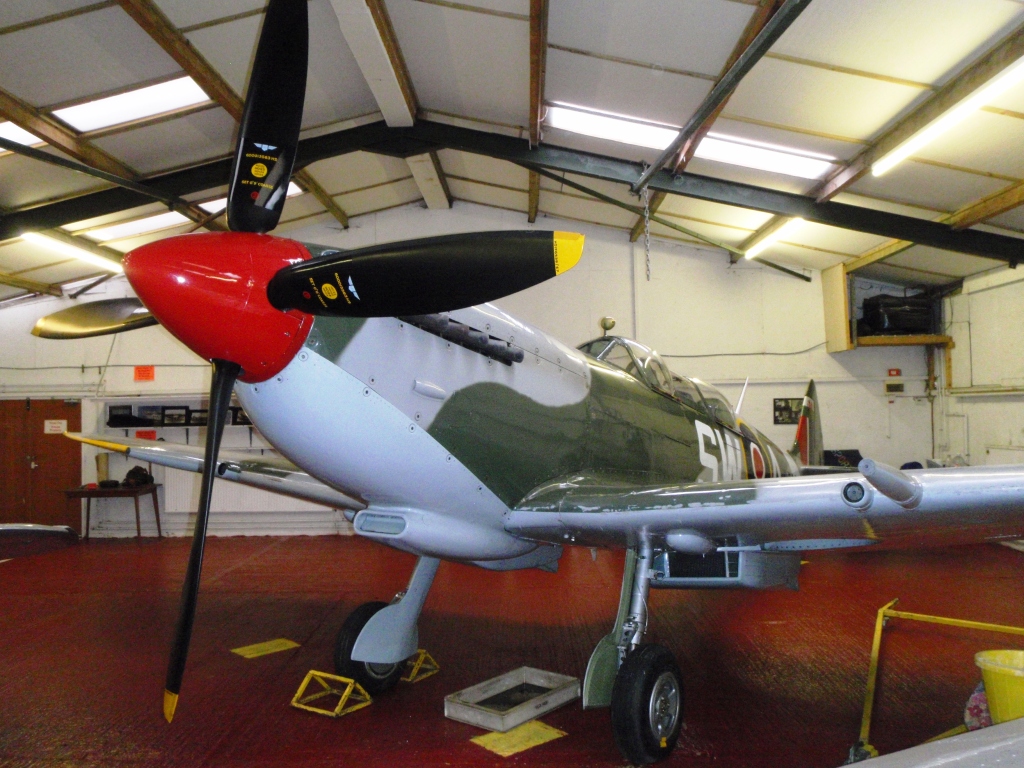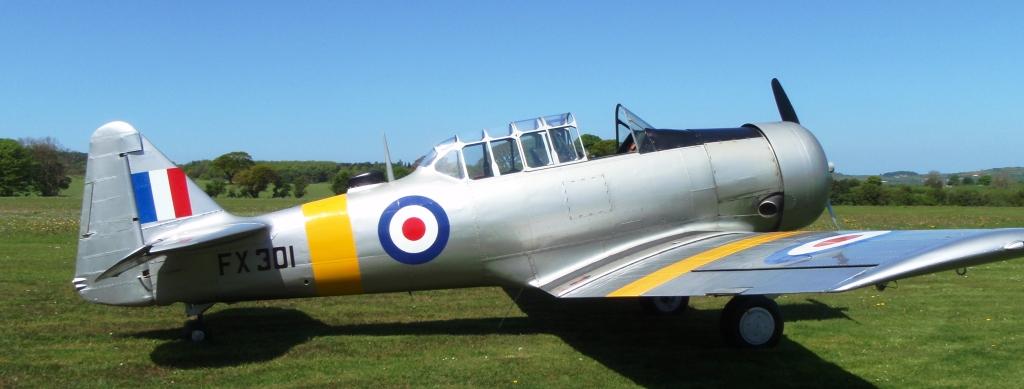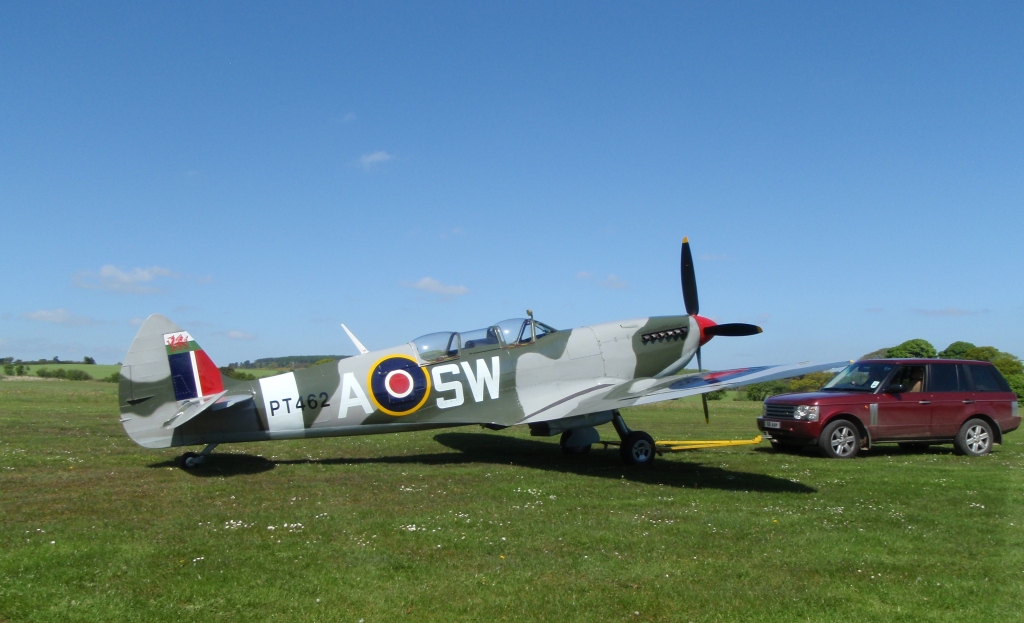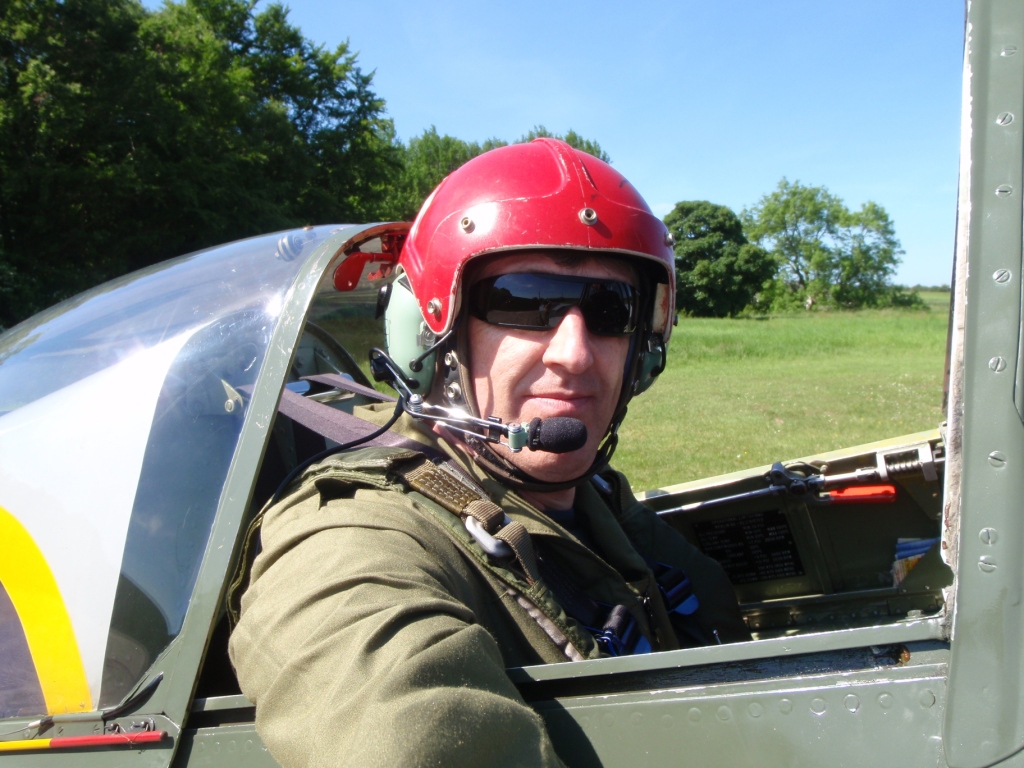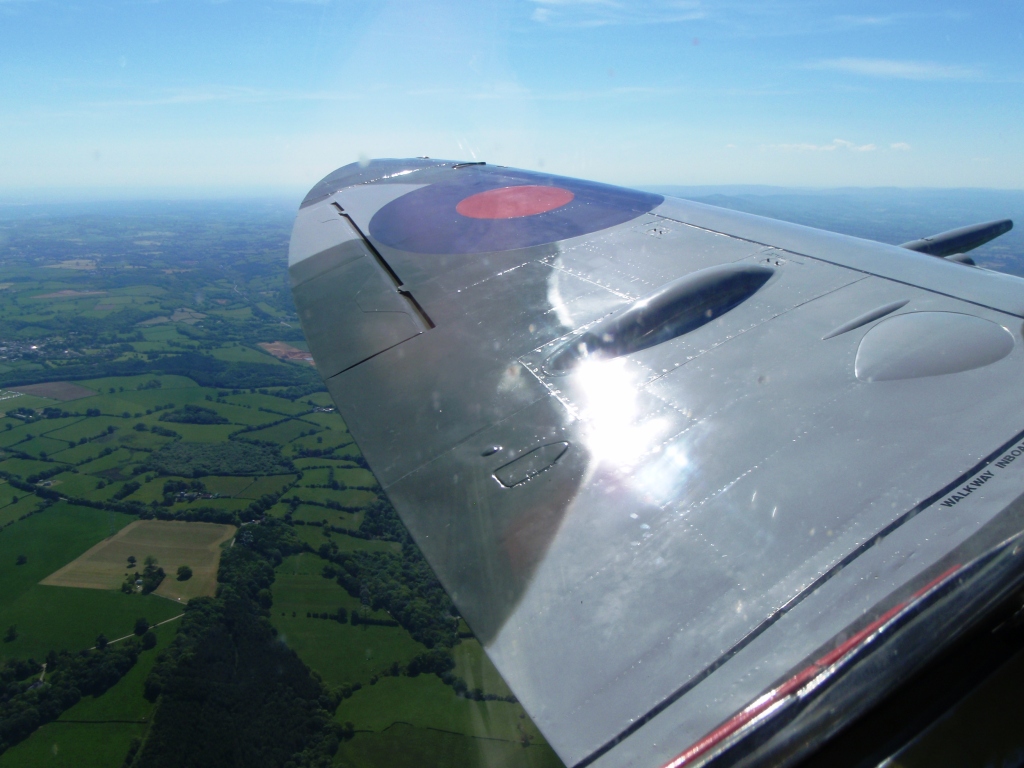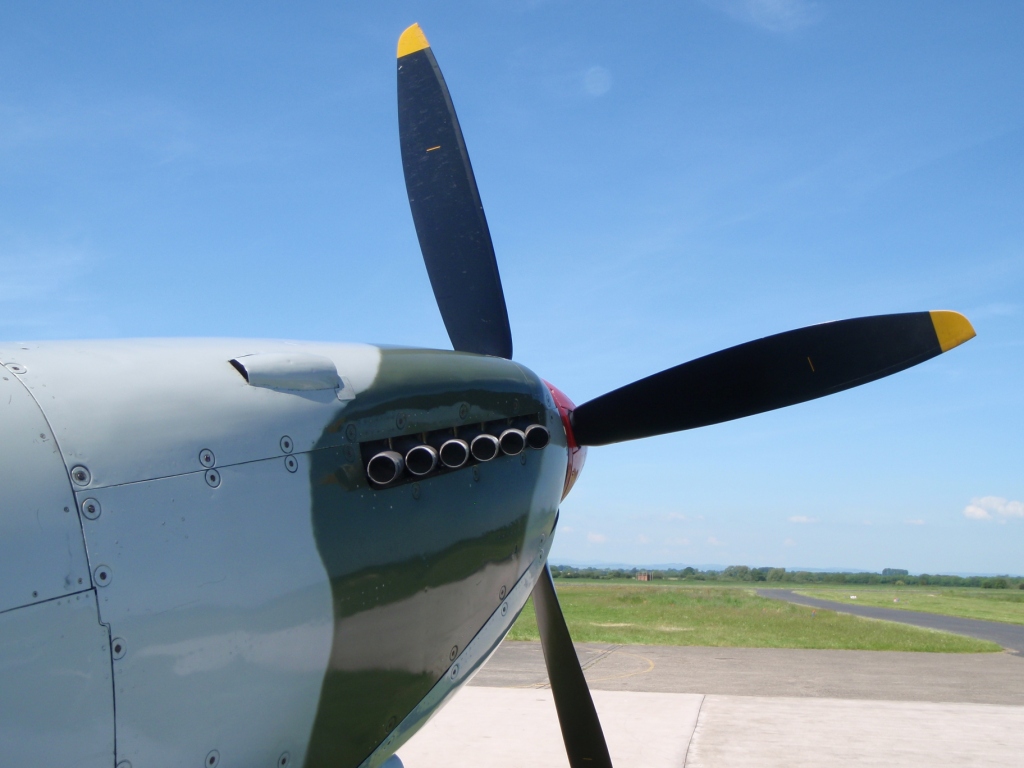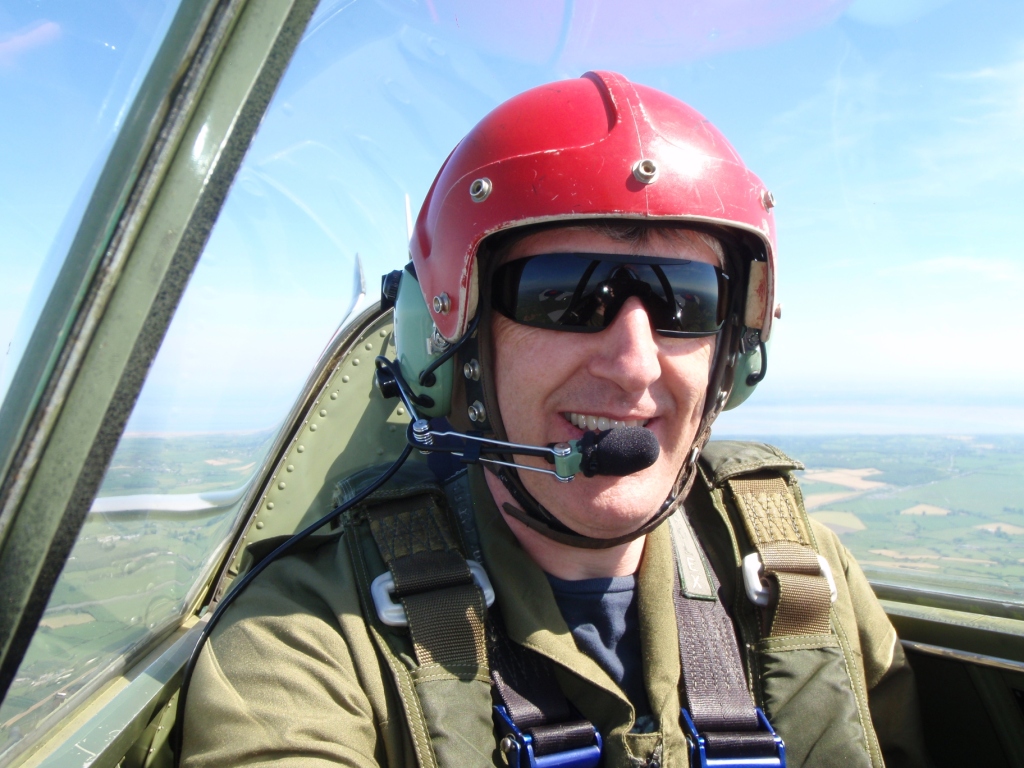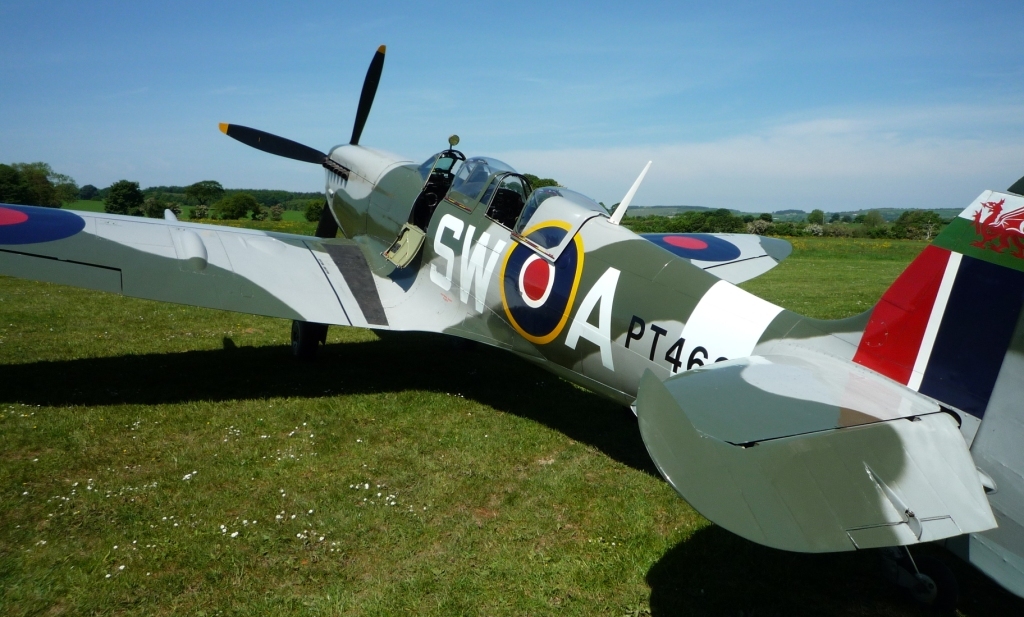Flying the Spitfire | North Wales, 2nd June 2009

Prologue |
In September 2008, I was introduced to a guy called Anthony Hodgson who was selling an AT-6D 1943 Harvard Mk III. I had wanted a Harvard/Texan for some time since I flew one over in America but I never really thought that one in good condition would become available and would be within my price range. I finally bought the Harvard in February 2009 although could ill afford to do so at the time. However, I went ahead with the purchase anyway (fortune favours the brave??) - but that's another story. When I first met Anthony, I travelled to his home in North Wales where he has a private hangar and a private grass airstrip. As we entered the hangar to inspect the Harvard, I was astonished to discover that the hangar also housed a superb Vickers / Supermarine Mark IX, modified, two-seat Spitfire which Anthony had owned for a few years. The Harvard is a formidable aircraft and is an advanced 'warbird' trainer, but if you own a Spitfire, why would you want to fly a Harvard ? This, it transpired, was the genuine reason that the Harvard (which Anthony had owned and operated for some 20 years) was for sale - the Harvard simply wasn't being flown and that's a waste of a fantastic aircraft..
Training on the Harvard As part of the sale deal, Anthony generously offered to fly with me for a while on the Harvard. It's a big step up from the aircraft I'd been flying previously to a powerful, advanced WWII trainer and it would have been foolish for me to turn down the offer of training from someone who had owned and operated the aircraft for many years. He's familiar with all the little quirks of the machine and was able to teach me the way to manage the engine properly. Even starting the Harvard has a knack to it and although I could have technically just bought it and flown it away (as I've got enough tailwheel time), it would have been stupid and somewhat dangerous to have done so and to have spurned the opportunity to take advantage of Anthony's expertise. Anthony's a thouroughly splendid chap and has gone far beyond what I might have initially expected in terms of the time he's been prepared to spend with me to assist in the transition to the Harvard. Flying the Harvard, a twin Beech and, of course, the Spitfire, has made him a very accomplished pilot and I've learned a great deal from him whilst we've been flying together.
|
Flying the Spitfire - 2nd June 2009 During our early dialogue, and before I'd committed to buying the Harvard, I'd made a rather 'tongue-in-cheek' suggestion to Anthony that if I went ahead and bought the Harvard, part of the deal should be that he would let me have a flight in the Spitfire and to my surprise, he said that we could probably sort something out. I naturally thought that this was just a case of him telling me what I wanted to hear and, in view of the expense of operating such an aircraft and its pedigree and rarity (there are only 7 two-seat Spitfires in the WORLD!!!!), I never really expected to get a chance to fly it. However, in typical honourable fashion, Anthony rang me one morning, long after the sale of the Harvard was complete, to ask if I wanted to accompany him in the Spit on a short flight to Sleap airfield and, of course, I jumped at the chance. There was no need for him to do this as he certainly had no contractual obligation but he's the sort of chap who is decent enough to honour even an implied promise and I was very grateful indeed that he was prepared to give me this opportunity.
We've briefed on the use of the parachutes and what to do in the event of the need to bale out and, no sooner have I signed the appropriate disclaimer paperwork, we're starting up and taxying out. Engine management is an important part of operating a Spitfire as the temperatures rise to damaging levels very quickly so it's necessary to get airborne as soon as possible. If there are any delays in departure it could even become necessary to shut down until the temperatures fall back into the green. However, delays are not a problem at Anthony's private airstrip so we're airborne in no time.
I won't wax lyrical about the sound of the Merlin engine on start-up save to say that it's noisy and smokey but it's also distinctive and absolutely brilliant! The accelaration on takeoff is enough to pin you back in your seat and the rate of climb is simply breathtaking. We're at 5000 feet in seconds and once established in the cruise Anthony transmits "You have control" and here I am, flying a Spitfire! The handling is extremely responsive and the slightest input on throttle, stick or rudder brings an immediate response. For such a powerful warplane, it surprises me that one has to be almost delicate in the handling of the controls. The combination of power and grace is unexpected and is perhaps one of the things which invariably results in Spitfire pilots romanticizing about the aircraft type. From my perspective, it's clear that this isn't a low powered touring aircraft and it isn't a trainer - it's definitely the real deal. Rather than head directly to Sleap, we detoured and did some aeros over a number of small lakes. Loops, barrel rolls, hesitation rolls, half-Cubans, victory rolls and skimming low over the water; the Spitfire seemed keen to undertake every move effortlessly. Some of the manoeuvers are entered at in excess of 300 knots - we're really moving and I get just a small insight into how formidable an aircraft this would have been to come up against in aerial combat. On approach to Sleap, the comparative speed of the Spit was very evident as there was another aircraft in the circuit ahead of us but as we were much faster, we cut inside and had landed, taxied to the fuel pumps and shut down by the time the other aircraft was turning onto final approach.
After refuelling all 5 tanks at Sleap, we fly back to the private grass strip and Anthony executes a perfect 3-point landing after only a 15 minute trip when most aircraft I've previously flown would have taken 40 minutes for the same trip.
I thoroughly enjoyed my flight in the Spit and feel privileged to be one of a very small number of pilots to have been at the controls of such an historic and enigmatic aircraft. The Spitfire is 'just another aeroplane' but it evokes an incredible feeling of nostalgia and is coveted by wartime aviation enthusiasts like no other aircraft. The American P51 Mustang is arguably a superior aircraft and the Hawker Hurricane was earlier into the conflict and was responsible for more enemy kills than the Spitfire. However, the fact remains that, when the Spitfire was first introduced, the Germans were actually frightened of it as they had nothing to match it. The Spitfire will always be the aircraft associated with our victory in the Battle of Britain and probably for this reason, the distictive sound of the Merlin engine and the unique silhouette of the Spitfire's eliptical wing will always be what spectators are looking for at airshows. All it will take is an overdue Lottery win and I'll have one myself! Click here to go to the history of Spitfire SW-A PT462
|
